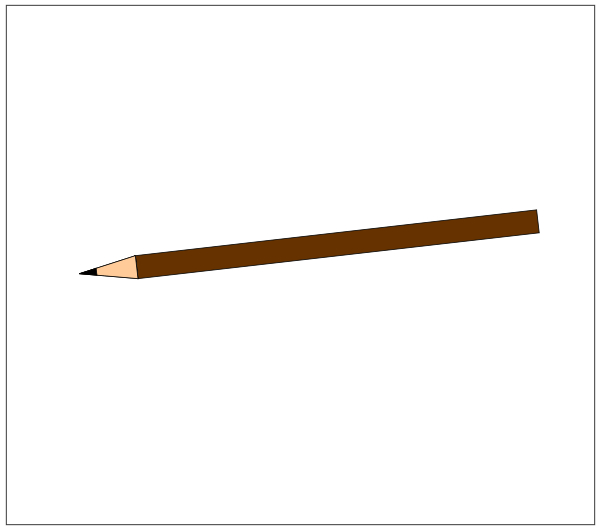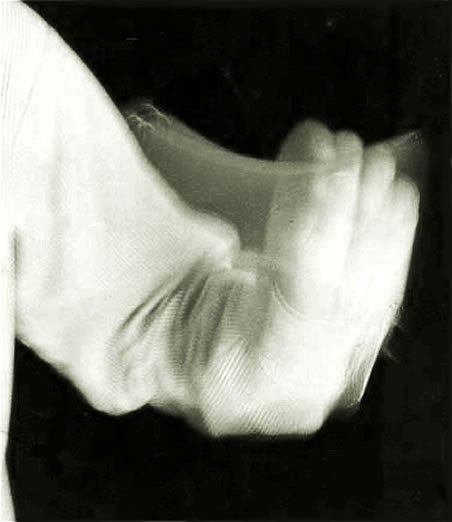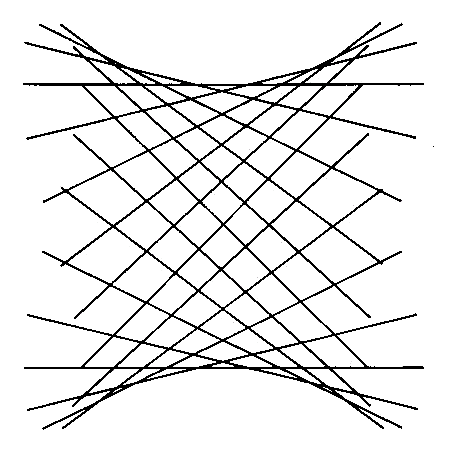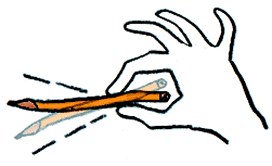 |
© Akiyoshi Kitaoka
 |
|
 |
Illusory
bending of a rigidly moving line segment: Abstract Introduction The first scientific investigation of the rubber pencil illusion was performed by Pomerantz (1983). He presented observers with computer-generated displays of a rigid line segment undergoing various combinations of translation and rotation, and he asked them to rate the apparent “rubberiness” of each display on a 100-point scale. Figure 2 shows a static representation of four of the conditions used in that study. Each panel depicts a superposition of all of the discrete frames of a particular motion sequence. Figure 2A shows a horizontal line segment whose vertical position varies sinusoidally over time; Figure 2B shows a line segment whose orientation varies sinusoidally over time; and Figures 2C and 2D show different combinations of these basic translational and rotational components. Note in the latter two conditions how the motion trace produces a smoothly curved envelope. Pomerantz suggested that it is the curvature of the densest motion trace that leads to the illusory perception of bending, and he argued that this may be due to visual persistence at early levels of processing, perhaps even in the retina. Completely this article read HERE -> |
| |
| REFERENCES: • Pomerantz, J. R. (1983) The rubber pencil illusion. Perception & Psychophysics, 33, 365-368. • Suzuki, K. (2002) The rubber pencil illusion. IAEA proceedings, 105-108. • Wallach, H., &O’Connell, D. N. The kinetic depth effect.Journal of Experimental Psychology, 1953,45,205–217. • Long, G. M. Iconic memory: A review and critique of the study of short-term visual storage.Psychological Bulletin, 1980,118, 785–820. • Johansson, G. Visual motion perception.Scientific American, 1975,232, 76–88. • Johansson, G. Visual perception of rotary motion as transformation of conic sections.Psychologia, 1974,17, 226–237. • Goldstein, E. B.Sensation and perception. Belmont, Calif: Wadsworth, 1980. • Gilbert, G., &Rydell, W.Great tricks of the master magicians. New York: Golden Press, 1977. • Burr, D. Motion smear. Nature, 1980,284, 164–165. |
|
|
| Copyright
© 2004 ABC-people.com Design and conception BeStudio © 2018 |
